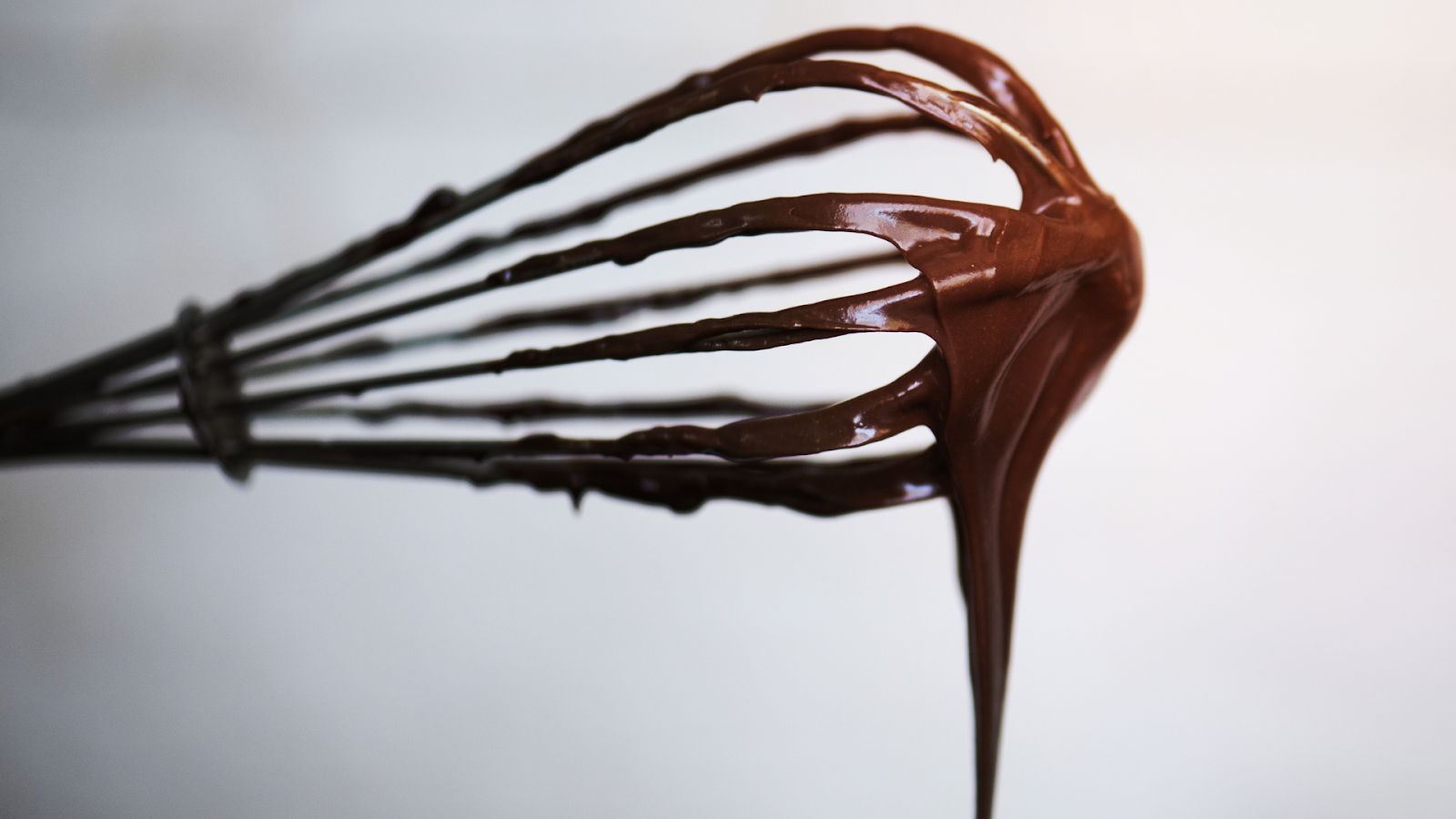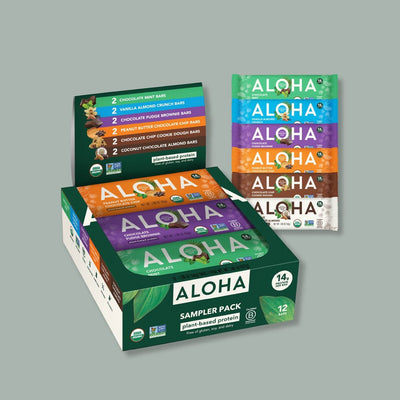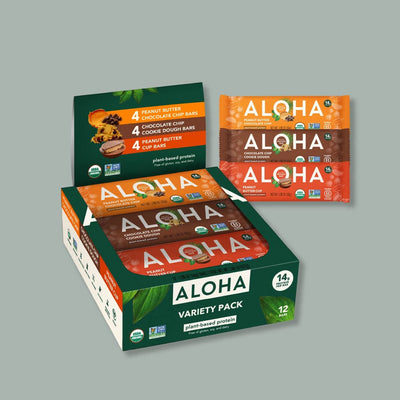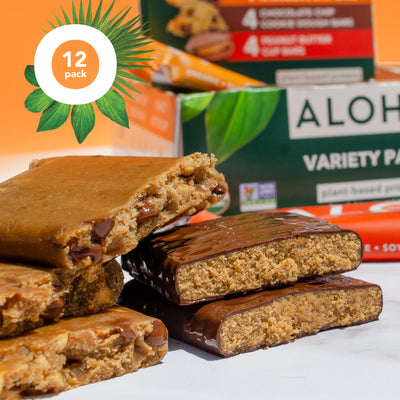Key Takeaways:
- Difference in Processing: Cacao and cocoa originate from the same trees but are processed differently, resulting in distinct nutritional profiles where cacao is higher in antioxidants and minerals.
- Difference in Health Benefits: Both cacao and cocoa offer health benefits, but cacao is less processed and thus retains more healthful properties, while cocoa is more widely consumed in commercial chocolate products.
- Sustainability in the Chocolate Industry: Sustainable and fair trade farming practices are increasingly important for the chocolate industry to mitigate environmental impacts and ensure farmers' fair compensation and working conditions.
When indulging in chocolate delights, the terms 'cacao' and 'cocoa' often pop up, seemingly interchangeable. However, they harbor distinct differences beyond spelling, extending into their origin, processing, nutritional content, taste, and health implications. Understanding this distinction is not just about expanding your culinary vocabulary; it's also crucial for making informed dietary choices and knowing exactly what you're incorporating into your wellness routine.
In this piece, we'll dissect the differences and nuances between cacao and cocoa to equip you with the knowledge you need to navigate the world of chocolate-based products. We'll explore the journey from the plant to the product, peel back the layers of their nutritional profiles, and consider each offer's health benefits. We’ll also delve into the delectable culinary uses, weigh the cost and availability, and even touch on the environmental impact.
Power up with ALOHA’s chocolate bliss – fuel your day with our decadent chocolate-flavored protein bars! Perfectly balanced nutrition meets irresistible taste. Grab yours now & energize on the go!
Origin And Processing
The backstory of any chocolate product is a tale of transformation, where humble tree seeds become sought-after delicacies. Both cacao and cocoa begin their journey as beans from the cacao tree, but the processes they undergo are what define their identity.
While cacao is lauded for its minimal processing, cocoa experiences more intense heat and manipulation, creating a product with different qualities. These processes influence the taste and texture, nutritional value, and end products' use in our kitchens and industries.
As we dig into the details of raw cacao and processed cocoa, it becomes evident that the choice between them is about more than personal preference—it's about understanding their roots and the impact of their journey from a tropical tree to your pantry.
The raw material Cacao is the basis of all chocolate products. It comes from the seeds of the Theobroma cacao tree, which thrives in the warm climates of regions like West Africa and Central and South America. These seeds, commonly called cacao beans, are nestled in the tree's fruit—the cacao pod.
The journey of cacao begins with harvesting these pods and extracting the beans, which are then fermented and dried. This initial process is critical as it develops the beans' flavor profile.
Once dried, cacao can be considered raw if it is cold-pressed and minimally processed, keeping the temperature below 118°F to preserve the bean's natural enzymes and nutrients. This form of cacao—available as nibs, butter, or powder—is prized for its nutritional benefits and raw quality.
Ready For A Positive Change?ALOHA offers various plant-based protein products, including bars, shakes, and powders, made with organic, non-GMO ingredients to support a healthy and mindful lifestyle. Additionally, ALOHA provides valuable wellness content and community support to inspire and empower individuals on their wellness journey.
Browse ALOHA’s premium selection and take the first step towards a vibrant, healthier lifestyle. Don't just dream about wellness – make it your reality! |
Cocoa – The Processed Product
Conversely, 'cocoa' refers to beans processed at higher temperatures. After drying, the beans are roasted and ground, significantly altering the flavor and lowering the nutritional value due to the heat involved. This grinding process results in cocoa mass, which can be further processed to separate cocoa butter from what eventually becomes cocoa powder.
The powder, stripped of most of its natural fats, is often used in baking or for making chocolate products due to its refined flavor and solubility. It's important to note that cocoa can come in different levels of processing, from Dutch-processed, which is treated with alkaline to neutralize acidity, to natural cocoa, which retains more of the bean's inherent properties.
Nutritional Profiles
Nutritionally, cacao, and cocoa diverge significantly due to the differences in processing. Understanding these variances is crucial to making choices that align with your health goals or dietary needs.
Cacao Nutrition Facts
Cacao is often celebrated for its rich array of nutrients. In its raw form, cacao is known to be high in antioxidants, particularly flavonoids, linked to numerous health benefits. It is also a good source of minerals such as magnesium, iron, potassium, and calcium.
Furthermore, cacao contains a variety of phytonutrients and enzymes that contribute to its health-promoting profile. Raw cacao is generally considered superior to its processed counterparts for those seeking to maximize their intake of beneficial compounds from chocolate.
Cocoa Nutrition Facts
Cocoa, though still beneficial, has a different nutritional makeup due to the roasting process, which can reduce heat-sensitive nutrients and antioxidants. Roasting turns the cacao bean into what we know as cocoa, lowering its antioxidant content but still providing a notable amount of minerals, including iron, magnesium, and zinc.
These minerals contribute to various bodily functions, from oxygen transport in the blood to muscle and immune system support. Additionally, cocoa is a modest source of fiber and protein. Fiber plays a crucial role in digestive health and helps maintain steady blood sugar levels, while protein is essential for muscle function and overall body maintenance.
However, it’s worth noting that cocoa often appears in products with added sugars and fats, which can dilute its potential health benefits, a consideration one should consider when evaluating chocolate products for nutrition.
Health Benefits And Drawbacks
While cacao and cocoa originate from the same plant, their health implications differ due to their levels of processing. It's important to weigh their benefits and potential drawbacks alongside each other.
Health Benefits Of Cacao
Cacao, as the less processed option, retains a higher level of natural antioxidants known to combat oxidative stress in the body. The flavonoids in cacao can aid in reducing inflammation and improving heart health by enhancing blood flow and lowering blood pressure. The positive impact on cardiovascular function positions cacao as a heart-healthy ingredient, potentially aiding in preventing cardiovascular diseases.
Moreover, some studies have suggested that these antioxidants may have neuroprotective effects, potentially boosting brain function and mood. Cacao also contains compounds that may contribute to regulating energy use and appetite, playing a role in weight management.
Health Benefits Of Cocoa
The health benefits of cocoa are reduced compared to its less processed counterpart, cacao, primarily due to the roasting process involved in cocoa production. This process leads to decreased heat-sensitive antioxidants found in cacao, diminishing its overall potency essential for combating oxidative stress and accessing its neuroprotective effects.
Additionally, flavonoids, present in cacao and associated with cardiovascular benefits, may be lost during roasting, affecting the cardiovascular advantages that are more prominent in raw cacao.
Furthermore, compounds in cacao believed to contribute to energy regulation and weight management may undergo alterations during cocoa processing, potentially diminishing their effectiveness. But despite its processing, cocoa still offers some health benefits. Given its widespread use, cocoa provides a more accessible way to enjoy some of the benefits of cacao, albeit in a less concentrated form.
Considerations And Potential Risks
When considering cacao or cocoa for their health benefits, it's essential to account for any drawbacks. Consuming high amounts of cacao results in high caffeine and theobromine content, which can cause side effects such as jitteriness or sleep disturbances in sensitive individuals. Some cacao products may also contain higher levels of heavy metals like cadmium, which can accumulate in the body over time.
Cocoa, particularly in commercial chocolate products, is often accompanied by added sugars and saturated fats, which can negate the health benefits if consumed in excess. Consuming cacao and cocoa mindfully is vital, considering the potential risks and benefits.
Taste And Culinary Use
The taste profile of cacao and cocoa is as distinctive as their nutritional benefits. Their unique flavors lend themselves to different culinary applications, making each suitable for specific dishes and recipes. Let’s explore how each ingredient can be best used to tantalize the taste buds.

The Unique Taste Of Cacao
Cacao is known for its bold, bitter flavor and earthy undertones — a richness often associated with dark chocolate. Its raw form, such as cacao nibs, provides a crunchy texture and intense chocolate hit that can be an acquired taste for some. This bitterness, due to the high levels of flavonoids, contributes to the complex and nuanced flavor that sets cacao apart in the world of chocolate.
Cacao works well in smoothies, health bars, and desserts where its raw purity can be appreciated, often paired with sweeteners or fruits to balance its robust flavor profile. The interplay between cacao's bitterness and the sweetness of the complementary ingredients creates a symphony of flavors that caters to a diverse palate.
Unleash a wave of flavor and nutrition with ALOHA's Chocolate Protein Powder! Blend up a luxurious, chocolatey smoothie full of plant-based protein. Optimize your health most deliciously – shop now and stir your way to wellness!"
The Richness Of Cocoa
Cocoa has a milder, more mellow chocolate flavor due to its roasting process. It has a smoother taste profile that many find more palatable and is often associated with comfort food — think hot cocoa or chocolate cake. Its powdered form is soluble, making it an ideal ingredient for creating creamy textures in beverages like hot chocolate or chocolate milk.
The soluble nature of cocoa also extends its utility to baked goods, where it seamlessly incorporates into the batter, infusing its delightful essence throughout the treats. Cocoa's culinary versatility extends to sweet and savory dishes, where it can add depth and complexity to sauces, rubs, and marinades, highlighting its rich and versatile nature.
Culinary Applications
Cacao and cocoa can claim their rightful place in the kitchen. Cacao's rich nutrients and bold taste make it a favorite in raw foods and health-conscious recipes, ideal for those looking to add nutritional value without added sugars or fats. Cocoa's user-friendly taste and solubility make it a go-to for comforting desserts and everyday treats.
The adaptability of both cacao and cocoa extends beyond their pure forms, seamlessly integrating into pre-mixed blends, offering a spectrum of possibilities for culinary enthusiasts at every skill level. Whether you're a beginner cook experimenting with the basics or a gourmet chef pushing the boundaries of flavor complexity, the dynamic duo of cacao and cocoa ensures a delicious journey in the kitchen.
Cost And Availability
When deciding whether to stock your pantry with cacao or cocoa, it's helpful to consider not only their taste and health benefits but also their cost and availability. These factors can influence your decision about which is a more practical addition to your diet.
The Market For Cacao
Cacao is often considered a premium product, especially in its raw or less processed forms. As such, it tends to be pricier and less readily available than cocoa. You'll likely find cacao products in health food stores, specialty retailers, or online, which might lead to additional shipping costs.
The price tag reflects the nutritional value and the often more complex and labor-intensive process of keeping it raw or minimally processed. It is a worthwhile expense for those willing to invest in cacao for its health properties.
The Accessibility Of Cocoa
Cocoa, the more processed variant, is typically less expensive and widely available in many grocery stores. There's a broad range of cocoa products, from more affordable generic brands to high-end options that offer better quality or ethical sourcing.
The prevalence of cocoa in various forms—powders, mixes, and chocolate bars—allows for flexibility in price points, making it a more accessible ingredient for daily use. While it usually doesn't match cacao's nutritional profile, cocoa presents a budget-friendly alternative for those looking to enjoy chocolate's comforting taste.
While cocoa may not precisely replicate the nutritional richness of its less processed counterpart, cacao's widespread availability and affordability contribute to its popularity in households and kitchens worldwide. Whether used to whip up a quick batch of brownies or stirred into a cozy cup of hot cocoa, cocoa's accessibility, and comforting taste make it a practical and enjoyable choice for many chocolate enthusiasts.
Environmental Impact
The chocolate industry's environmental impact is a concern that has been getting increasing attention. Both cacao and cocoa production come with environmental considerations, from the farming practices to the manufacturing processes. Understanding these impacts can inform more sustainable choices.
Farming Practices For Cacao
Cacao farming, when done sustainably, can have positive environmental effects, like preserving biodiversity and preventing deforestation. Many cacao farmers use agroforestry techniques, planting cacao trees under the canopy of larger trees, which supports a more diverse ecosystem.
However, in some areas, cacao farming leads to clear-cutting forests, which diminishes biodiversity and contributes to carbon emissions. The demand for raw cacao has also resulted in scrutiny over farming practices, with a push towards more organic and fair-trade certified products that ensure environmental and social sustainability.

Production Impacts Of Cocoa
The production of cocoa necessitates a series of processes that can be energy-intensive, especially for mass-market products. Roasting, grinding, and conching (the fine milling of chocolate) require significant amounts of electricity and generate heat.
Additionally, the transportation of cocoa often involves long distances, increasing the carbon footprint associated with these products. On the flip side, the waste products from cocoa production, like cocoa pod husks, can be recycled as fertilizers or biofuels, helping to mitigate some of the environmental impacts.
Consumer choices in the cacao and cocoa markets can have ripple effects on the environment. Consumers can support a more environmentally friendly chocolate industry by opting for products from companies prioritizing sustainable practices.
Final Thoughts
As we've examined the journey from tree to tree, it's clear that cacao and cocoa have their merits and drawbacks. Cacao stands out for its nutritional benefits, particularly its high antioxidant content.
For those prioritizing health and willing to pay a premium for less processed products, cacao is undoubtedly a compelling choice. On the other hand, cocoa offers a balance of flavor, affordability, and convenience, making it a ubiquitous and versatile ingredient in kitchens worldwide.
Ultimately, the decision between cacao and cocoa depends on personal values, dietary goals, and budget. Whether you choose the rich nutrients of cacao or the comforting taste of cocoa, both can hold a place in a balanced and mindful diet. As consumers become more informed about their food's origins, processing, and environmental impact, our choices can lead to a healthier self and planet.
Indulge wisely with ALOHA’s Mini Chocolate Protein Bars! Perfectly portioned for on-the-go satisfaction, our bite-sized bars pack a flavorful punch of pure chocolate delight. Treat your taste buds and maintain your wellness goals — pick up your mini chocolate marvels now!
Read also:
- Does Protein Give You Energy? Separating Fact From Fiction
- How to Eliminate Decision Fatigue With Daily Routine
- Mindset Morning Routine
Frequently Asked Questions
What is the primary difference between cacao and cocoa?
Cacao refers to the raw seeds from the cacao tree and the products made without high-temperature processing. Cocoa is made from roasted cacao beans and is often more processed, including in everyday chocolate products.
Is cacao healthier than cocoa?
Yes, cacao is generally considered healthier than cocoa because it undergoes minimal processing, which helps preserve its higher levels of antioxidants and beneficial nutrients.
Can I substitute cocoa for cacao in recipes?
Yes. Be mindful that cocoa is less bitter and more processed, so the flavor and nutritional content may differ from cacao. You may also need to adjust sweeteners accordingly.
Are cacao and cocoa sustainable?
It depends on the source. Look for sustainability certifications like fair trade or organic to ensure your purchase supports environmentally friendly practices.
Why is cacao more expensive than cocoa?
The minimal processing and often organic cultivation of cacao typically make it a higher-quality and, thus, more expensive product than cocoa.
Is cocoa powder always sweetened?
No. Pure cocoa powder is naturally bitter and doesn't contain added sugar, although some commercial hot cocoa mixes are pre-sweetened.
Can eating cacao or cocoa improve my mood?
Both contain compounds that may positively impact mood, but the effects can vary from person to person.
Is there a taste difference between cacao and cocoa?
Yes, cacao is more bitter and has a deeper, earthier flavor, while cocoa is milder and smoother due to the roasting process.
Which is better for baking, cacao or cocoa?
Cocoa powder is commonly used in baking because of its solubility and familiar flavor, but cacao can be used for a richer, more intense chocolate taste.
How can I choose the most healthful chocolate products?
Look for products with higher cacao content and minimal additives. Products labeled as dark chocolate with a high percentage of cacao are usually a good choice for healthier options.
Sources:
- Bartley, B. G. D. (2005). The Genetic Diversity of Cacao and Its Utilization. In Google Books. CABI. https://books.google.com/books?hl=en&lr=&id=_I40iGVJD64C&oi=fnd&pg=PR7&dq=cacao&ots=M9D4P3nZZ5&sig=epG7k7vmdpn9vOZWm_I43dWjVbw
- de Souza, P. A., Moreira, L. F., Sarmento, D. H. A., & da Costa, F. B. (2018, January 1). Cacao—Theobroma cacao (S. Rodrigues, E. de Oliveira Silva, & E. S. de Brito, Eds.). ScienceDirect; Academic Press. https://www.sciencedirect.com/science/article/pii/B9780128031384000101
- McNeil, C. (2009). Chocolate in Mesoamerica. https://doi.org/10.5744/florida/9780813029535.001.0001
- Aprotosoaie, A. C., Luca, S. V., & Miron, A. (2015). Flavor Chemistry of Cocoa and Cocoa Products-An Overview. Comprehensive Reviews in Food Science and Food Safety, 15(1), 73–91. https://doi.org/10.1111/1541-4337.12180
- Katz, D. L., Doughty, K., & Ali, A. (2011). Cocoa and Chocolate in Human Health and Disease. Antioxidants & Redox Signaling, 15(10), 2779–2811. https://doi.org/10.1089/ars.2010.3697
|
ALOHA's products are not intended to treat, diagnose, mitigate, prevent, or cure disease. ALOHA's products should not replace prescribed medications or the variety of foods important to a healthful diet. Do not self-diagnose any health condition. Work with your healthcare provider to determine how best to achieve optimal health. |









